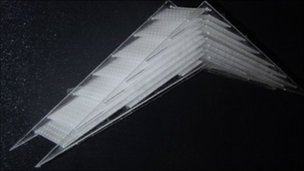Harry Potter fans rejoice, because even though scientists have not found a way to make an invisibility cloak, they are certainly working on it. Through their trials and tribulations, a technique has been found to cloak objects from incoming sound waves.

Using “meta-materials,” or man-made materials that have certain properties that do not occur naturally, scientists were able to create a way to shield objects from incoming sound waves, and the sound waves would never even know the object was there.
Dr. Cummer had come up with the theory back in 2008 and just recently started to put the theory to practical use, expanding the idea and its uses.
Using stacked sheets of plastic with a specific array of holes and space between the sheets, scientists are able to predict how the sound waves will react to the material. If placed on a flat surface, the plastic sheets redirect the sound waves as if the object were not present. It was very surprising how simple the configuration of the materials were, being plastic sheets with holes being poked through.

In the above image, the top picture shows sound waves reflecting off a surface. The middle picture shows how the waves react when an object is present. In the last image, the object is covered by the cloaking material, making the sound waves act as if it is not present.
There are many ideas of how to utilize this new discovery. Everything from the military to the arts can benefit and create unique ways to use it. Concert halls can be finely tuned for the perfect acoustics while warships can be shrouded from enemy sonar. Even sound-proof homes can be built to block out the annoying neighbor with the heavy bass. The one that always likes to start their music parties when you go to bed.
While all this is quite a breakthrough for detection-less technology, it is still very new and must mature to be entirely useful. At the moment it only works with very direct sound waves in two dimensions, on a flat surface. To be utilized in a three dimensional space with more variables for the sound, the material would need to be refined and tweaked.
Perhaps the most exciting piece of news is that there is most certainly research and development for the invisible technology. One day we may all have cloaking materials, undetectable to the human eye and ear.
Check out this cloaking watch or this attempt at a real life invisibility cloak for more non-eye catching fun.
Via BBC










